You can use the Matrix to help yourself understand moral injury.
At the root of moral injury is moral pain. It is painful for your morals to be violated or to have violated them yourself. This pain highlights what’s important to you — and that is information you can put in the Internal-Toward (lower-right) quadrant of your grid.

This psychological pain can take many forms: emptiness, heaviness, tears, sadness, anger, fear, disgust, anxiety, guilt, shame. Thoughts often show up along with those emotions. Maybe things like “It’s unfair” or “I can’t handle this” or “I’m broken.” Do those thoughts lead you toward or away from who or what matters to you?
Pain and suffering can be things that come up and get in the way of moving toward who or what is important to you. If so, they can go in the Internal-Away (lower-left) quadrant of your grid.
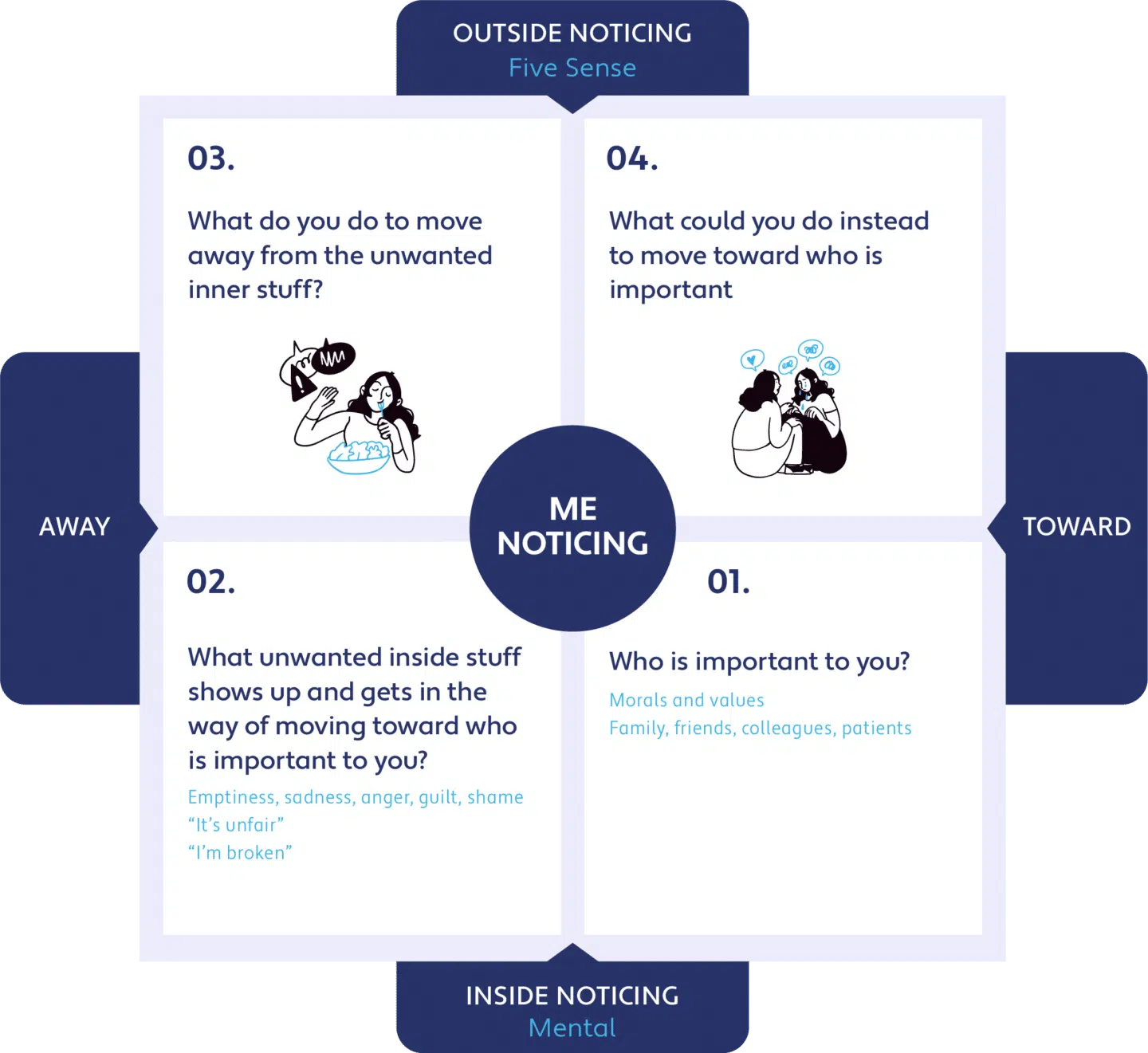
If you do get caught up in these thoughts, then how does that impact your behaviour? What do they lead you to do? What do you do to get away from them: Withdraw? Have a few drinks? Sleep more? Avoid people? Avoid activities? These responses belong in your grid’s External-Away (upper-left) quadrant.
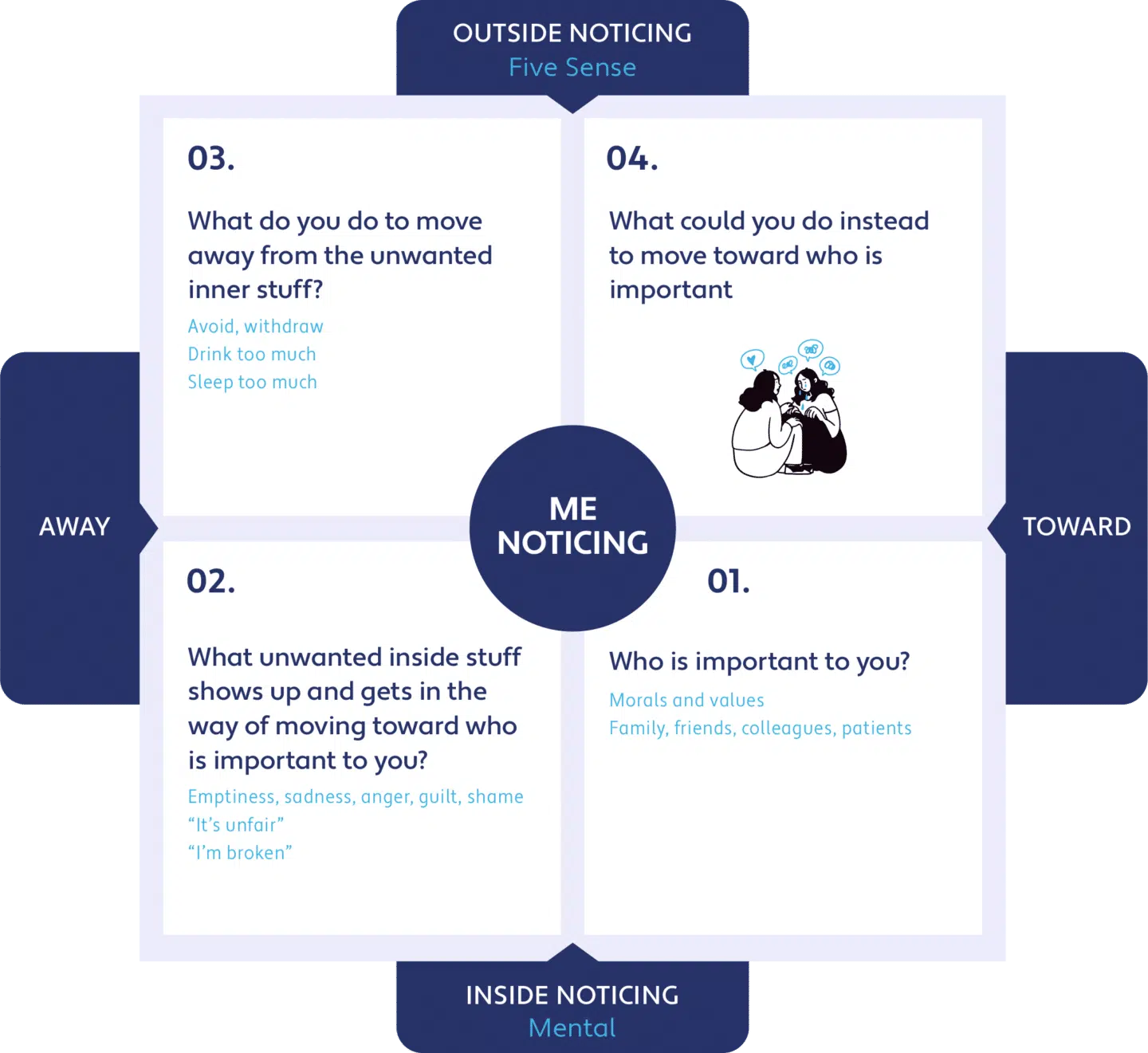
However, are these behaviours Toward or Away moves? They likely make you feel better in the short run, as they are normal human responses to avoiding or minimizing pain. The question to ask yourself is, “Are my behaviours also helping me in the long run?”
Many healthcare providers have reported increased intake of alcohol and other substances during the pandemic. This is an understandable response to try to cope with the incredible, prolonged work pressures that they have lived with since COVID-19 started.
In the long run, however, substance use is likely to have negative consequences. For example, if you drink too much and avoid your friends and family to cope with psychological pain, then what kind of thoughts and feelings will you have? You may feel guilty, embarrassed, ashamed, and/or angry at yourself for behaving that way.

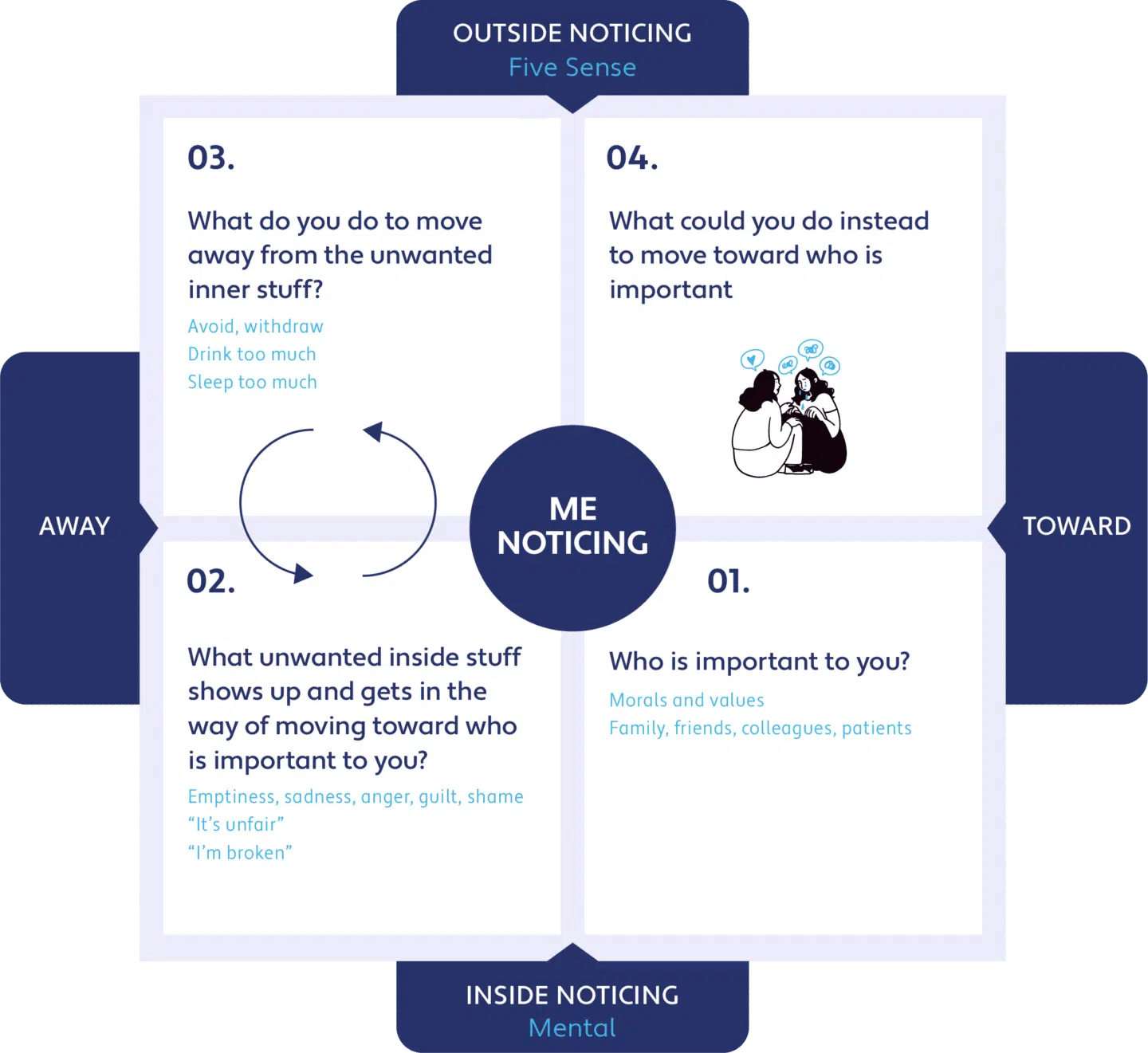
These behaviours that work in the short turn can sometimes loop you back down to the Internal-Away (lower-left) quadrant of the Matrix. That is, in your efforts to get rid of or fix your psychological pain, you can trap yourself in a feedback cycle that will make you feel even worse in the long run.
This is the “stuck loop” in which your moral pain can become a moral injury that is now impacting your life and taking you away from the things that matter.
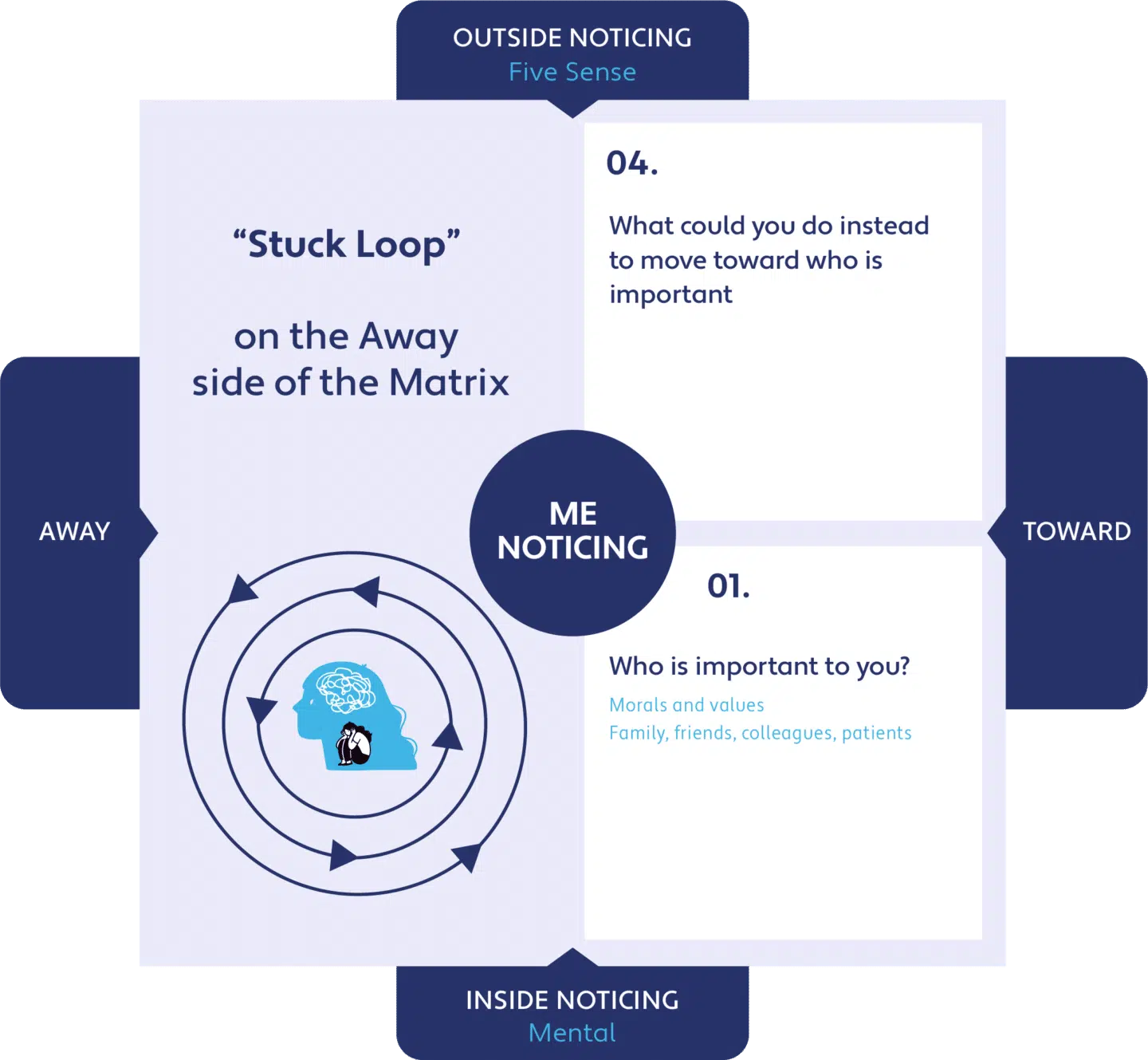
More importantly, these short-term behaviours do not move you to the Toward side of the Matrix.
It’s a very normal human response to try to “get rid of” or “solve” the unwanted things on the Away side of the Matrix. However, we recommend you take a different perspective — one based on theory and science. Instead of trying to “fix” the Away side of your Matrix, focus on your behaviours on the Toward side. That’s where you can live a meaningful, purposeful life and connect with those who are important to you.
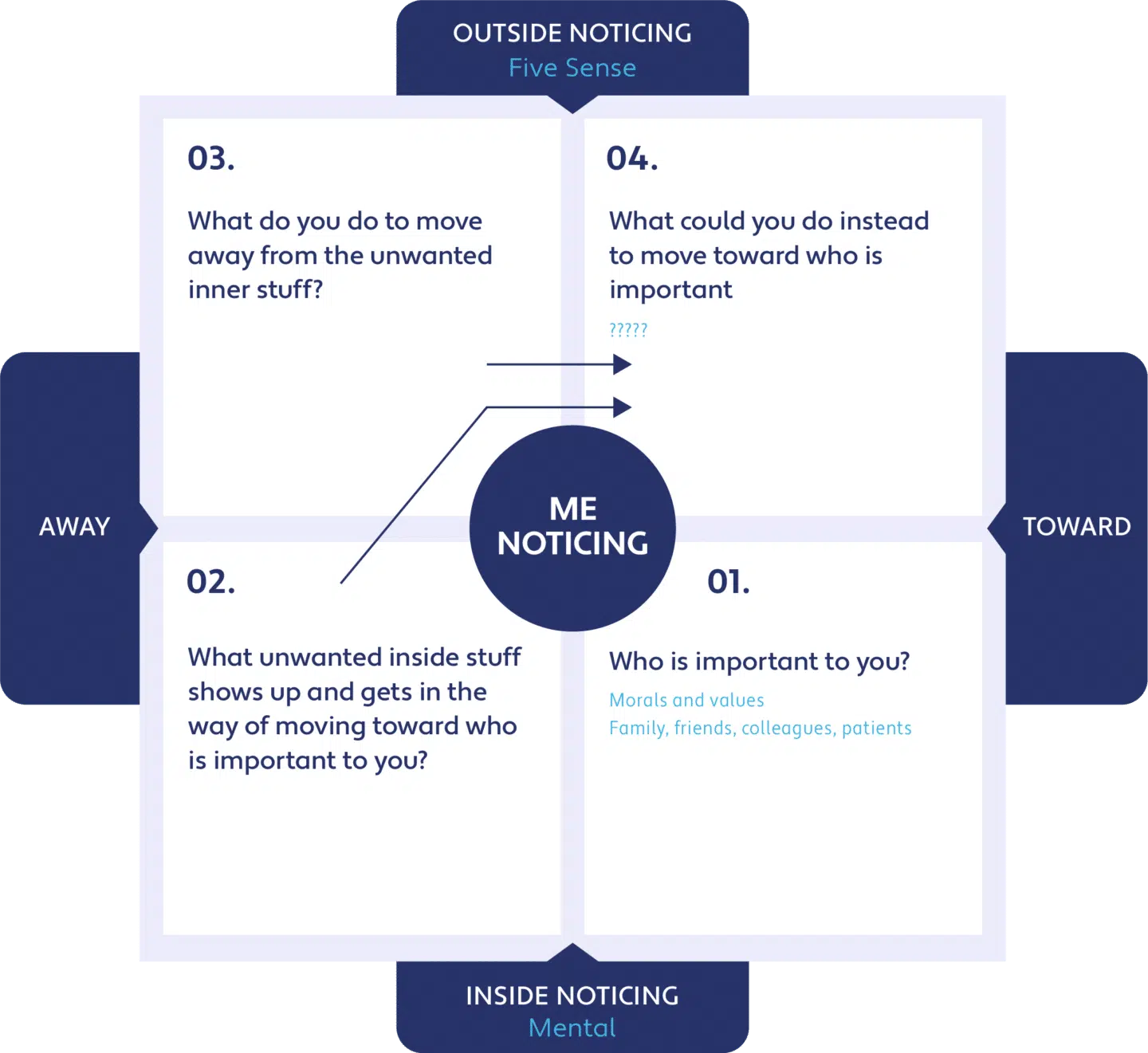
To get to the Toward side of your Matrix, you need different tools. You need to fill the upper-right quadrant (Toward-External) with behaviours you can do to move yourself toward who matters. This is the only way to guarantee you will reach the Toward side of the grid.
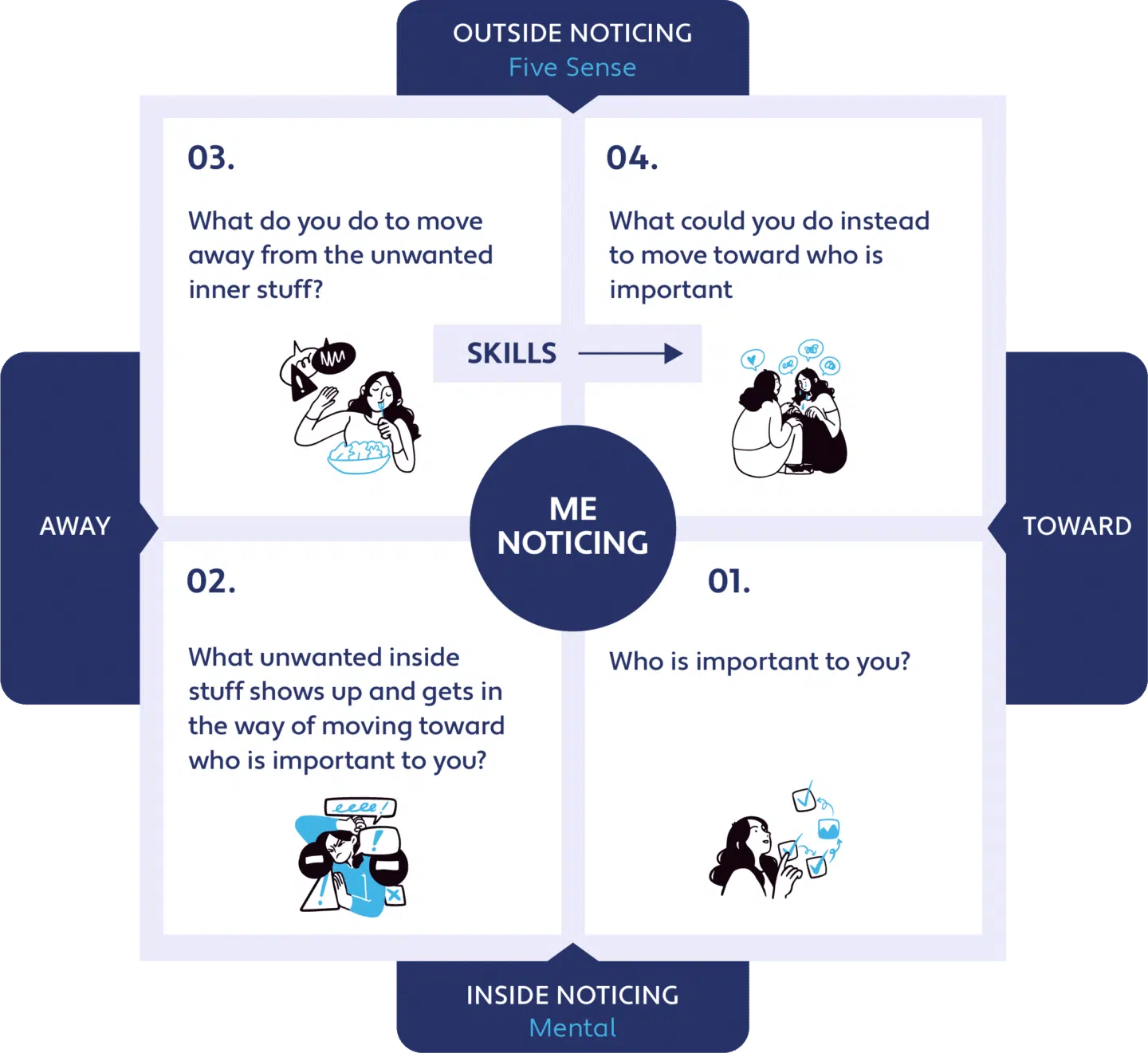
And that’s what this informational program is designed to do: provide you with evidence-based ways to spend more time on the Toward side of your own Matrix.
